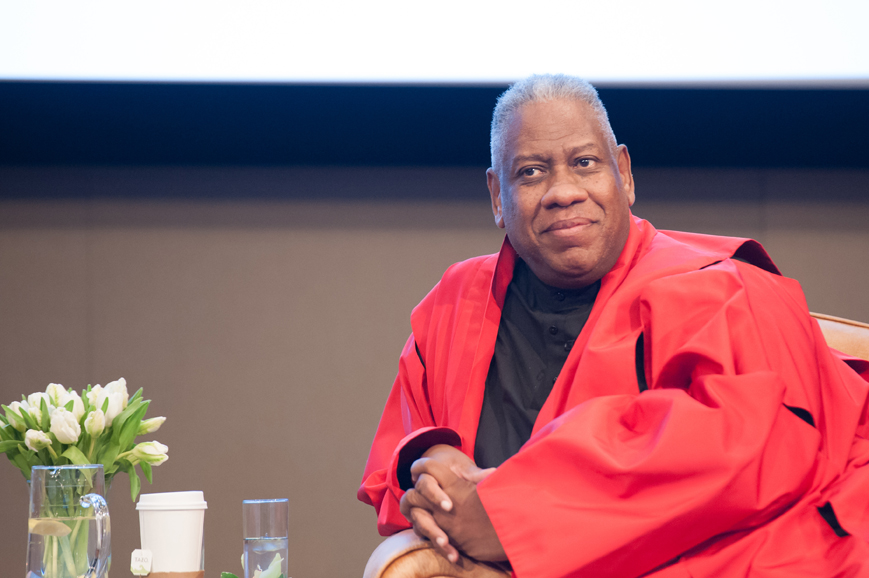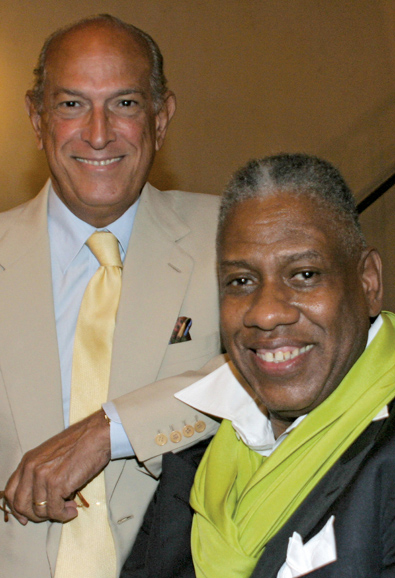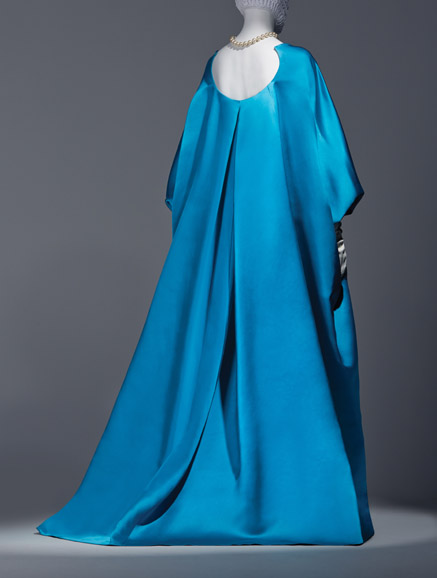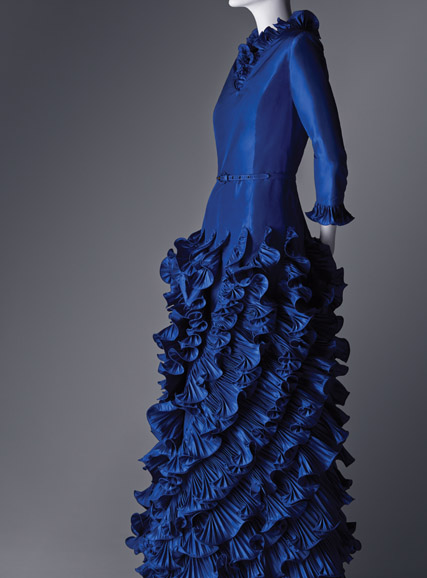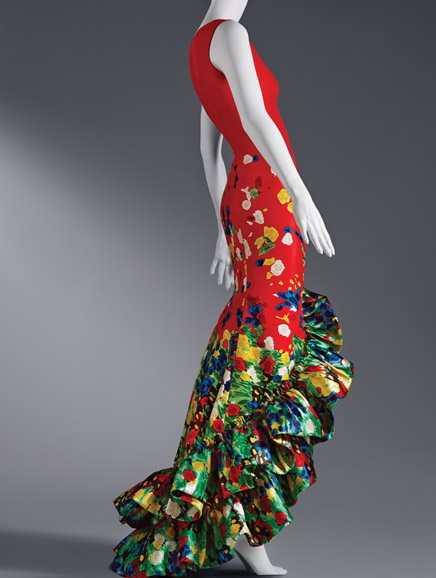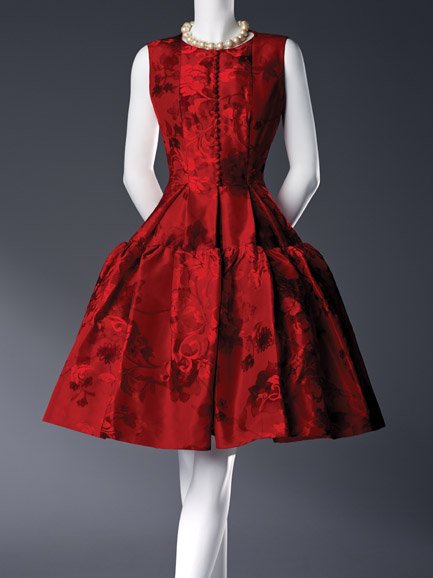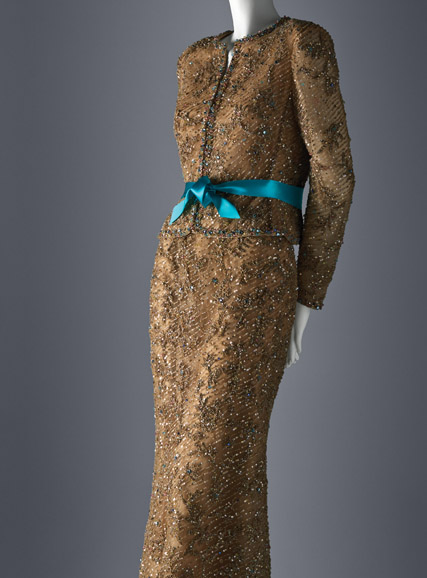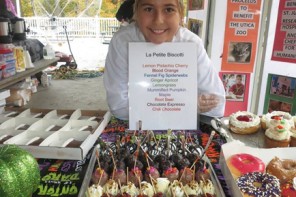“As grand as he is humble” was the way André Leon Talley described his friend and mentor Oscar de la Renta after the Katonah Museum of Art presented Talley with its Himmel Award recently for his work as a fashion editor, writer, curator and mentor.
But “grand” and “humble” might be words that you could apply to Talley as well. Fashionistas are well-acquainted with the grand part — the larger-than-life figure swathed in couture caftans and capes on the red carpet, the familiar face on such TV shows as “America’s Next Top Model,” the man who has the ear of first ladies and film queens alike.
He has been mentored by Diana Vreeland of Harper’s Bazaar, Vogue and Metropolitan Museum of Art fame; advised Anna Wintour, Vogue’s haut-influential editor-in-chief; and shopped with Diana Ross for diamonds in Paris, lunching with her at Maxim’s. (Oh, to have been along for that ride.)
But this is a man who also cherishes his quiet life in White Plains — nurturing his trees and savoring the familial atmosphere of City Limits Diner, where he is a regular — one who has never forgotten his roots in Durham, N.C., and the beloved grandmother who taught him that clothes are indeed part of what makes the man.
If Talley is equally at home in White Plains and Paris, in the magnificent gardens of the de la Renta abode in Kent and the vast reaches of Morgan Stanley’s Purchase headquarters, where the Himmel Award lecture and reception took place, that’s because he is always completely, utterly and totally himself.
“Don’t listen to anyone else,” he told the audience of about 200 at the Himmel presentation. “If you want to wear pajamas, wear them.”
And yet it is clear that he has made a career, in part, of others listening to him, whether it’s Wintour at Vogue, where he’s a contributing editor and writer, or supermodel Naomi Campbell or Oscar winner Jennifer Hudson.
“In fact, a day for me that is one of pleasure is a day spent offering advice and counsel to women who seek my opinion on matters of dress,” he wrote in “Little Black Dress” — the delicious Skira Rizzoli companion book to his 2012-13 exhibit at the Savannah College of Art and Design (SCAD)’s Museum of Art, where the André Leon Talley Gallery opened in 2011. He went on to quote Oscar Wilde’s play “An Ideal Husband”: “Men are the only authorities on dress.”
“Of course, women are deep experts on fashion,” he added in an interview with WAG. “But men have a certain viewpoint they can contribute.”
What’s the chief fashion faux pas women make?
“Shopping on impulse,” he said without hesitation. “A woman should shop with a purpose. The only thing to buy on impulse are books and candy.”
While candy is “verboten” for the man who eats a plant-based diet, books clearly are not. Talley — who studied French literature as a graduate student at Brown University after attending the Rhode Island School of Design and tends to think of everything as narrative — happily dwells amid “islands of books” and is giving 15 boxes of them to the Fashion Institute of Technology.
Dispensing volumes or pearls about clothing and candy finds Talley wearing one of his most stylish hats — as mentor.
“A treasured friend and devoted SCAD advocate for more than a decade, Andre’s contributions to SCAD’s academic community can scarcely be enumerated,” Paula Wallace, the college’s founding president, wrote in “Little Black Dress.”
“It’s each generation’s responsibility to pass on the knowledge you have, just as you learned from your heroes,” Talley told WAG.
In that interview, at the Himmel Award and in the pages of “LBD,” Talley movingly remembered his first hero — his grandmother Bennie Frances Davis, who raised him and worked as a maid for four decades at Duke University. Nonetheless, everything in the house was ironed and there was always food on the table, including her trademark biscuits.
“I thought she was special, because of her blue hair,” he told the Himmel crowd, referring to the rinse she used to keep her gray hair from dulling or yellowing.
Davis made her summer dresses in her bedroom on a Singer sewing machine, whose wrought-iron foot pedal Talley lovingly polished with furniture cream. Every week, she would consult the young Talley on the selection of her Sunday best and every week, a dry cleaning truck would pick up whatever had been worn and return it the following week. Talley recalled the black suit from the 1940s that his grandmother wore on special occasions. She wore the suit when she accompanied him on a trip to New York, just as he had once accompanied her on her annual shopping expeditions.
The other seminal female figure of his youth was Vreeland, for whom he volunteered at The Met’s Costume Institute after graduating from Brown and heading to New York.
“What she (Talley’s grandmother) and Mrs. Vreeland had in common was a holistic approach to fashion.”
If Davis taught him the intimate pleasure of helping a woman create a crisply tailored ensemble, Vreeland taught him to think of clothes as storytelling. A gold lamé gown from the 1934 film “Cleopatra” was not merely a gold lamé gown but the tale of an embattled teenage queen. Talley had the mannequin spray-painted gold. It was the beginning of heady days, covering the runways and couture houses for Interview magazine, Women’s Wear Daily and Vogue, and headier nights at Studio 54.
It was also in the mid-1970s that Talley met another great influence on his life, Oscar de la Renta, the subject of a recent SCAD Museum of Art exhibit curated by Talley and another sumptuous Skira Rizzoli book. (He is at work on a de la Renta show for San Francisco’s de Young museum, opening March 12.)
From de la Renta, for whom fashion, food, family, gardening and home design were all integrated, Talley learned about pruning his 130-year-old copper beech tree and cultivating life’s garden.
Quoting the last line of Voltaire’s “Candide,” Talley said, “We must all cultivate our gardens.”

